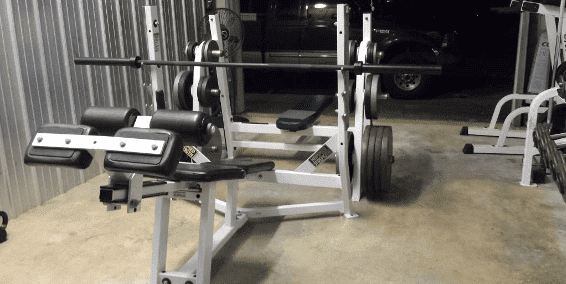You try to go to the gym most days, but then you decide to take a rest day. Maybe a rest day turns into a few days off….and before you know it, three weeks have passed you by without one day of exercise. Like many who take a workout break, you wonder: “Have I lost my muscles?” or “How long before I’m out of shape?”
There are lots of reasons to take a break from your workout routine — vacation, harsh weather, work demands, family obligations, etc. Even the most dedicated fitness enthusiast may be forced to stop for a while due to sore muscles, illness, or injury.
You shouldn’t push yourself to work out every day without a break because your body needs rest and recovery days to repair muscle fibres and strengthen itself between workouts. It’s a well-known fact that training recovery is a critical component of an exercise program, and for most people, this consists of one to three days of rest depending on intensity of the activity.
However, if you go beyond a week without activity, you begin to experience the effects of “detraining” (also called deconditioning), a phenomenon in which you lose the beneficial effects of training. As opposed to rest and recovery, detraining is an extended rest interval that results in reduced physical fitness.
The good news is that deconditioning is reversible once you get active again.
Factors that affect loss of fitness

The extent of fitness loss you experience depends on several variables. These include the length of your layoff, your age and your level of fitnss.
Time away from the gym
In general, just two weeks of detraining can lead to significant decline in physical fitness. A study from the Journal of Applied Physiology concluded that just a fourteen-day break significantly reduces cardiovascular endurance, lean muscle mass, and insulin sensitivity.
What would happen if you took an even longer break from exercise – say, 2 months? One study found that 2 months of detraining in elite athletes resulted in unfavourable changes in body composition, impaired metabolic function, and development of cardiovascular risk factors. Although the time it takes to lose fitness levels depends on how fit you are to begin with and how long you’ve been exercising, even the most religious gym-goers will experience loss of fitness after an extended hiatus.
Age
As people age, aerobic capacity, muscle quality, as well as agility naturally decline. It is important to exercise and stay active as you get older to preserve functional fitness. One study looked at the effects of detraining on elderly adults, both short and long term, and found that losses in fitness gains are compounded as you age. It’s important to track how your body is changing as you age because the loss in muscle mass and strength can decline rapidly, and soon even daily life activities suddenly become more difficult.
Level of Fitness
The fitter you are, the longer it can take for your body to get out of shape. For example, trained athletes tend to experience more gradual declines during detraining than your regular gym goer. For someone who works out a few times a week and is “moderately fit”, it may take two to four weeks to see significant detraining effects. Someone who is training more intensely will take longer to experience de-conditioning.
The physiological impacts on your body

When you stop exercising, many physiological changes occur. You begin to lose the cardiovascular gains you’ve made, such as your heart’s ability to pump blood more efficiently, your body’s improved capability to use carbohydrates for fuel, and your muscles’ enhanced capacity to process oxygen. Any improvements you’ve seen with your blood pressure, cholesterol levels, and blood sugar may diminish. You may experience some weight gain. If you’ve been strength training, the gains in muscle size, strength, and endurance you worked so hard for will taper off.
Aerobic Capacity
It is well known that working out is good for your heart – it becomes more efficient pumping blood, and as a result, getting oxygen to the rest of your body. When you go a few weeks without physical activity, your heart not only begins losing its ability to handle extra blood flow, your body’s ability to effectively use oxygen, referred to as VO2 max, declines.
Research shows significant reductions in VO2 max within two to four weeks of detraining, which is attributed to decreased blood volume and cardiac output. Another study found that most of the aerobic capacity gained through exercise over two to three months is lost within two to four weeks.
What does this mean for you? After a few weeks of sitting around rather than being active, you’ll start losing your and cardio and find yourself out of breath after climbing that flight of stairs.
Muscle Strength
When you cease exercising, you will undoubtedly notice changes in your muscles. They will become smaller and weaker. If you’ve been doing high intensity exercise or weight training, you’ll find a reduction in your muscular endurance.
A detraining period of 12 weeks results in decreased muscle mass and muscular strength, although the muscles can return to pretraining levels. The good news is that retraining can occur more quickly as a result of a concept known as “muscle memory”.
While strength performance may be maintained for up to four weeks of detraining, power and endurance may decline significantly in this time period as found in one study. In another study, postmenopausal women trained with resistance bands for twelve weeks and found a significant adverse effect on their muscle power during a four-week detraining period.
The bottom line? You may maintain your strength longer than power or endurance; however, after a month of sitting, you’ll find that carrying those groceries will be a bit more taxing and you’ll fatigue quicker than before.
Blood Pressure
Lowered blood pressure is a well-known benefit of regular exercise. In fact, exercise is a medically accepted lifestyle change to treat hypertension. A study that looked at the blood pressure responses in a group of prehypertensive men saw a decrease in blood pressure during a six-month period of training, and a rise in blood pressure after just two weeks of inactivity.
Of course, stopping your exercise routine does not mean you will have high blood pressure. However, if you already have hypertension, it is important to realize you may need to consult with your doctor if you’ve been using exercise to lower your blood pressure and you anticipate a period without exercise.
Blood Sugar
Normally, your blood glucose rises after you eat, then drops as your muscles and other tissues absorb the sugar needed for energy. Exercise is an effective way to lower blood glucose levels, but if you stop working out, your blood sugar levels may remain elevated after a meal.
Blood sugar levels have been found to have remained elevated after just 3 days of inactivity in young, generally healthy individuals. (1) The unfortunate consequence of being sedentary is that consistently raised glucose levels raise your risk of heart disease and diabetes.
The upside? Even a small amount of moderate exercise improves how your body regulates glucose and getting back to your routine will help you ward off preventable health conditions.
Fat Mass
One fear you may have is that your clothes will begin to feel a bit tight as your weight creeps up and your body goes from being toned and firm to plumper and flabbier. Detraining has been found to have negative effects on body composition, with an associated weight gain and a decrease in metabolic rate.
A few factors may contribute to an increase in your body fat when you stop working out:
First, your calorie requirement will decrease. As you lose muscle mass, your metabolism slows down as your muscles lose some of their ability to burn fat.
Secondly, you’re not burning the same number of calories as you used to because you’re moving around and working out less, so if you don’t adjust your food intake accordingly, those additional calories will be stored as fat. Something you should be wary of is visceral fat aka belly fat.
So, if you eat the same way you’ve been eating while you’re on a workout hiatus, your body won’t be burning the extra calories without an adjustment to your diet– and you will likely put on weight.
How to Manage a Detraining Period

The best way to stop fitness losses is to not abandon exercise in the first place. That doesn’t mean you should never skip a workout. Honour your body with needed rest and recovery. If you train hard, taking a break will help improve your muscle development and aerobic fitness and help you avoid overtraining syndrome.
But if you’re injured or very ill, you absolutely should rest. Life can get in the way of your normal fitness routine, but that doesn’t mean it’s the end of the world. Take time to rest and recover and get back on it when you’re feeling better.
Here are some tips to help minimize the negative consequences of abandoning your workout schedule if you aren’t forced to completely stop exercising for an extended time:
Crosstrain or try “light” activity that’s not part of your usual regimen, such as yoga, walking, or bike rides.
Try a chair workout or add stairs to your daily routine.
Scale back your workout schedule if time is the issue. Try just 1-2 sessions per week, break your workout into several shorter sessions, or incorporate a few sessions of high-intensity interval training.
Try working unaffected muscle groups if you’ve stopped exercising due to an injury such as a broken bone or ruptured tendon.
Maintain good nutrition while consuming adequate protein to minimize muscle loss.
Regaining fitness after a break

While it’s hard to predict exactly how long it will take you to regain your previous level of fitness, it probably won’t take as long to retrain to your peak condition as it did to become fit in the first place. Just don’t start adopting a sedentary lifestyle.
One thing that will work in your favour: muscle memory. Essentially, your muscles have special cells in your muscle fibres that “remember” previous training movements so that when you get back to working out after an extended layoff, you are able regain lost muscle quicker.
Here are some tips to help you get back into shape after detraining:
· Ease back into your workouts to avoid injury
· Wait a month before beginning a less-intense version of your regular workout
· Join group fitness classes or take part in a health-conscious exercise group
Patience and persistence are key. Remember, not all is lost – you can regain your fitness. Detraining is just a small part of your entire fitness journey.
Track your Progress

Keeping track of your progress is a pretty vital part of your self motivation. Having a Body Composition Analysis when your ready to return is the best way of establishing a ‘line in the sand’ for your own comparison. Whether you’ve had them in the past or not is irrelevant. This is about seeing your progress from this point in time.
Contact My Body Composition Solutions for more information.
Disclaimer: This article should not substitute professional medical advice. When starting a new diet or exercise plan, always consult your physician and exercise professional first.
Information in this article has been extracted and edited from InBody USA ‘What happens to your body when you stop working out?’ byJennifer Boidy, RN is a freelance healthcare content writer from Manchester.
This post was updated on September 10, 2018, for accuracy and comprehensiveness. It was originally published on August 1, 2017.
(1) According to a study published in Medicine & Science in Sports & Exercise
